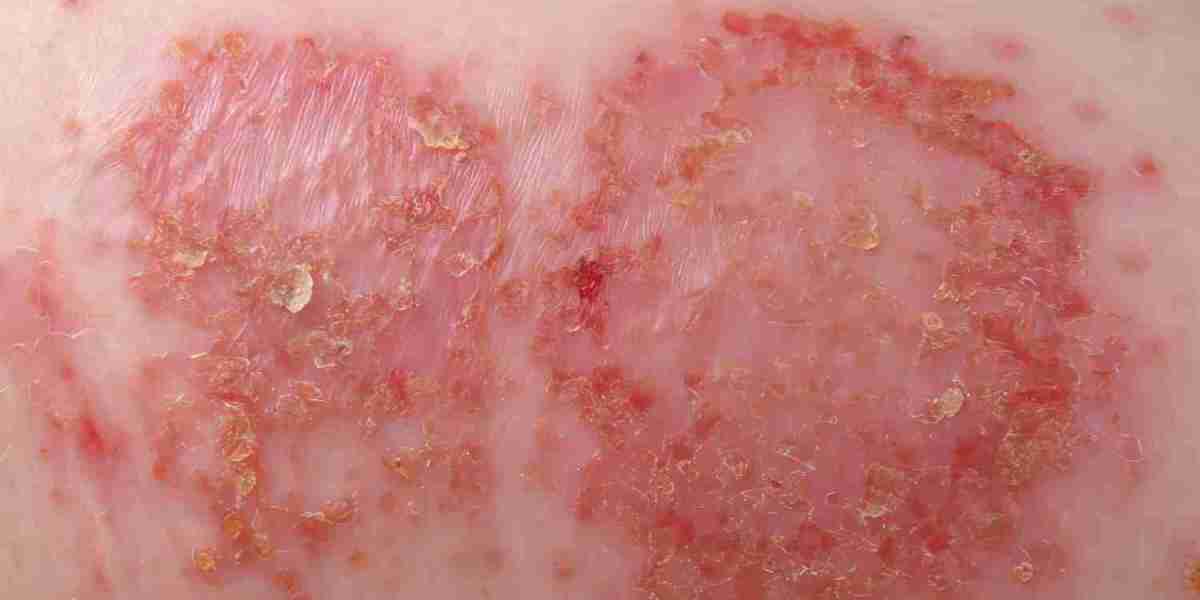Nummular eczema, also known as discoid eczema or nummular dermatitis, is a type of eczema characterized by coin-shaped patches of irritated skin. These patches can be itchy, red, and scaly, often leading to discomfort and frustration for those affected.
While the exact cause of mild nummular eczema isn't fully understood, several triggers and risk factors have been identified. In this blog, we'll delve into these potential causes and risk factors to gain a better understanding of this condition.
What is Nummular Eczema?
Mild nummular eczema typically presents as small, round patches of inflamed skin. These patches may appear on the arms, legs, torso, or other parts of the body. Unlike other forms of eczema that may affect larger areas or have different patterns, nummular eczema is often limited to these distinct coin-shaped lesions.
One of the primary triggers for nummular eczema is dry skin. When the skin loses moisture and becomes dry and cracked, it becomes more susceptible to irritation and inflammation. This is why keeping the skin well-moisturized is crucial in managing and preventing flare-ups of nummular eczema.
Who can get Nummular Eczema?
Nummular eczema can affect individuals of various ages, but it most commonly develops in specific age groups and under certain conditions. Men are more likely to develop nummular eczema after the age of 50, while women are more prone to developing it before the age of 30. Children rarely develop nummular eczema, though a few children living with severe atopic dermatitis (AD) have been known to develop it. Severe AD can result in excessively dry skin, which may contribute to the onset of nummular eczema in children.
Certain pre-existing conditions can also increase the risk of developing nummular eczema. Researchers have found that individuals are more likely to develop nummular eczema if they have one of the following conditions: atopic dermatitis, a blood relative with hay fever, atopic dermatitis, or asthma, poor blood flow to their legs or contact dermatitis. Additionally, hypersensitivity to mercury, a metal found in older dental fillings, may also trigger an immune system reaction that leads to nummular eczema.
Potential Causes and Triggers of Nummular Eczema
Dry Skin: Dry skin is a common trigger for nummular eczema. Environmental factors such as low humidity, harsh soaps, and hot showers can contribute to dryness, exacerbating the condition.
Allergens: Some individuals may experience nummular eczema flare-ups due to exposure to allergens such as pollen, pet dander, dust mites, or certain foods. Identifying and avoiding these allergens can help manage the condition.
Skin Irritants: Certain chemicals and substances found in skincare products, laundry detergents, and cleaning agents can irritate the skin and trigger eczema flare-ups. Opting for gentle, fragrance-free products can reduce the risk of irritation.
Stress: Emotional stress and anxiety can impact the immune system and contribute to skin inflammation. Managing stress through relaxation techniques, exercise, and mindfulness may help improve eczema symptoms.
Infections: Bacterial or fungal infections can sometimes trigger or exacerbate nummular eczema. Proper hygiene practices and prompt treatment of any skin infections are important in eczema management.
Climate Changes: Extreme weather conditions, such as cold and dry winters or hot and humid summers, can affect the skin and lead to eczema flare-ups. Adjusting skincare routines based on seasonal changes can be beneficial.
Symptoms of Nummular Eczema
Nummular eczema presents distinct symptoms that can help differentiate it from other types of eczema. These symptoms include coin-shaped lesions, which are the hallmark of nummular eczema, varying in size and often red, pink, or brown. The lesions are typically very itchy, leading to scratching and further skin irritation. Affected areas often become dry and may develop scales or crusts, and in some cases, the lesions may contain small blisters that ooze fluid.
Additionally, the skin around the lesions can become swollen and inflamed, and some individuals may experience pain or discomfort, especially if the skin is cracked or infected.
Potential Treatments for Nummular Eczema
Treating nummular eczema involves a multifaceted approach that addresses both the symptoms and underlying causes. Common treatment options include topical steroids, which reduce inflammation and itching, and are often the first line of treatment. Regular use of thick, fragrance-free moisturizers helps keep the skin hydrated and prevent flare-ups, especially when applied immediately after bathing.
If a bacterial infection is present or suspected, oral or topical antibiotics may be prescribed. Over-the-counter antihistamines can help reduce itching, especially at night. Calcineurin inhibitors, such as tacrolimus or pimecrolimus, are non-steroidal creams used for sensitive areas or long-term management. Phototherapy, or ultraviolet light therapy, can be effective for severe cases that do not respond to topical treatments. In severe cases, oral corticosteroids or immunosuppressive drugs may be necessary to control inflammation.
Additional Tips for Managing Nummular Eczema at Home
Managing nummular eczema at home involves adopting daily habits that support skin health and reduce the risk of flare-ups. Practical tips include keeping the skin moisturized by applying a thick moisturizer at least twice daily, especially after bathing, and using products containing ceramides, hyaluronic acid, or glycerin. Choose mild, fragrance-free soaps and cleansers to avoid irritating the skin, and bathe or shower in lukewarm water rather than hot water, which can strip the skin of natural oils.
Opt for soft, breathable fabrics like cotton and avoid wool and synthetic materials that can irritate the skin. Use a humidifier in your home to add moisture to the air, particularly during dry winter months, and drink plenty of water to keep your skin hydrated from the inside out. Identify and avoid personal triggers, such as certain foods, allergens, or stressors, and practice good wound care by keeping lesions clean and covered with a bandage to prevent infection.
Conclusion
Living with nummular eczema can be challenging, but with the right management strategies, it is possible to control symptoms and improve quality of life. For those seeking advanced treatment options, participating in paid clinical trials - MetroBoston can provide access to cutting-edge therapies.
By understanding the potential causes, symptoms, and treatments, individuals can take proactive steps to manage their condition effectively and explore new options for relief through clinical research.








